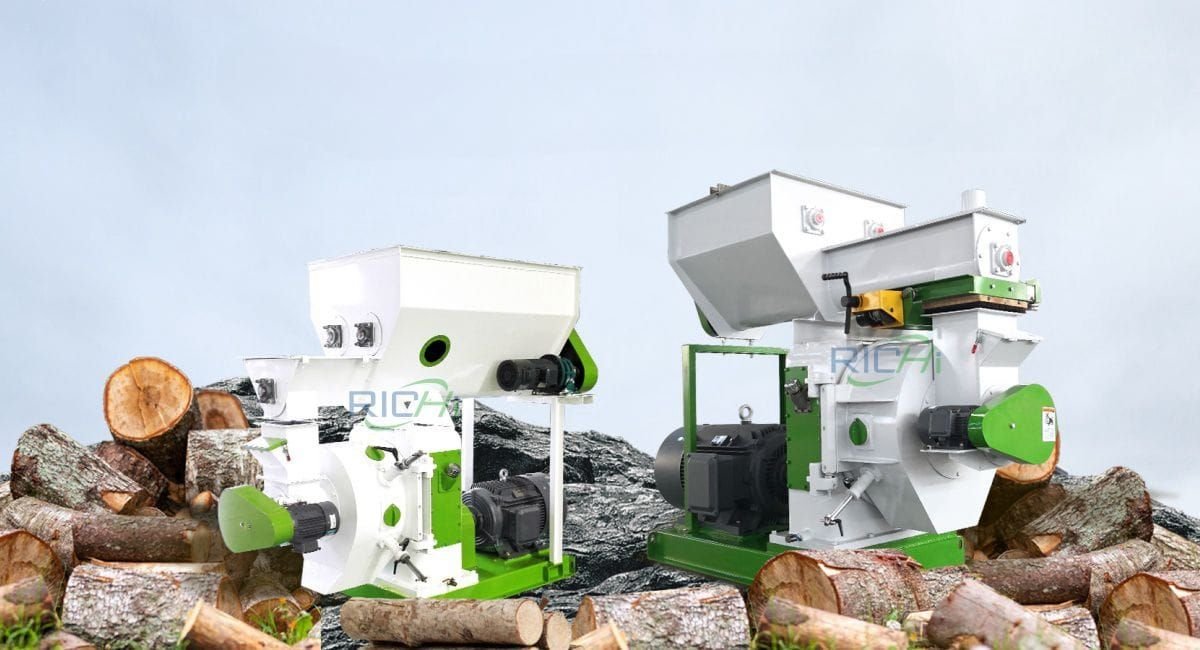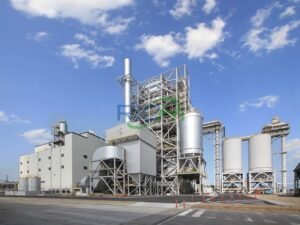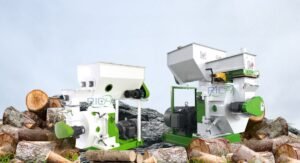
Wood pellet presses are essential machines in the biomass industry, converting raw materials into high-density pellets used for energy production, animal bedding, and other applications. Selecting the right wood pellet press can significantly impact the efficiency, quality, and profitability of your production process. This article outlines key factors to consider when choosing a wood pellet press that best suits your needs.
1. Determine Your Production Scale
The first step in selecting a wood pellet press is to assess your production scale. Different machines are designed for varying capacities, and understanding your needs will help narrow down your options.
- Small-Scale Production: If you are a hobbyist or operate a small farm, a flat die pellet mill may be suitable. These machines are compact, affordable, and ideal for producing small quantities of pellets, typically ranging from 50 kg/h to 400 kg/h.
- Medium to Large-Scale Production: For larger operations, consider a ring die pellet mill. These machines are designed for high-capacity production, with outputs ranging from 500 kg/h to several tons per hour. They are more efficient and can handle larger volumes of raw materials.
2. Assess Raw Material Types
The type of raw materials you intend to use plays a crucial role in selecting the appropriate pellet press.
- Wood Types: Different wood species have varying properties that affect pellet production. Hardwoods, like oak and hickory, require more pressure and higher temperatures compared to softer woods, such as pine and spruce. Ensure that the pellet press you choose can handle the specific types of wood you plan to use.
- Other Biomass Materials: Many pellet presses can process not only wood but also agricultural residues, such as straw, corn stalks, and sawdust. If you plan to use a mix of materials, ensure that the machine is versatile enough to accommodate them.

3. Choose Between Flat Die and Ring Die Pellet Mills
Understanding the differences between flat die and ring die pellet mills is essential for making an informed decision.
- Flat Die Pellet Mills: These machines are typically more affordable and easier to operate. They are suitable for small-scale production and are often used by hobbyists and small farms. Flat die mills have a simpler design, making them easier to maintain. However, they generally have lower output compared to ring die mills.
- Ring Die Pellet Mills: These machines are designed for high-capacity production and are more complex in design. They offer higher efficiency and can produce pellets at a faster rate. Ring die mills are ideal for commercial operations where large quantities of pellets are required. They also provide better pellet quality due to the consistent pressure applied during the pelleting process.
4. Evaluate Power Source
Wood pellet presses can be powered by various energy sources, and the choice of power source can affect operational costs and convenience.
- Electric Motors: Most wood pellet presses are powered by electric motors, which are efficient and easy to operate. Electric-powered machines are suitable for facilities with access to a stable electricity supply.
- Diesel Engines: For remote locations or where electricity is not available, diesel-powered pellet mills can be a viable option. They provide flexibility and mobility, allowing for on-site production.
- PTO (Power Take-Off): Some pellet mills can be powered by tractors through a PTO system. This option is ideal for farmers who want to utilize existing equipment and reduce operational costs.
5. Consider the Quality of Components
The quality of the components used in the pellet press can significantly impact its performance and longevity.
- Pellet Die and Rollers: The die and rollers are critical components that affect pellet quality. Look for machines with high-quality stainless steel dies, as they are more durable and resistant to wear. The design of the die should allow for adequate compression, which is essential for producing high-density pellets.
- Construction Material: The overall construction of the pellet press should be robust and designed to withstand the pressures of the pelleting process. Machines made from high-quality materials will have a longer lifespan and require less maintenance.
6. Analyze Maintenance Requirements
Maintenance is an essential aspect of operating a wood pellet press. Understanding the maintenance needs of the machine can help you choose one that fits your operational capabilities.
- Ease of Maintenance: Look for machines that are designed for easy access to components for cleaning and maintenance. Machines with fewer moving parts may require less maintenance and be easier to operate.
- Availability of Spare Parts: Ensure that spare parts for the pellet press are readily available. This availability can significantly reduce downtime in case of repairs.
7. Budget Considerations
The cost of the wood pellet press is a critical factor in the decision-making process.
- Initial Investment: Consider your budget for purchasing the machine. While high-capacity and advanced machines may have a higher upfront cost, they often provide better efficiency and lower operating costs in the long run.
- Operational Costs: Factor in the costs associated with running the pellet press, including energy consumption, maintenance, and labor. A more efficient machine may have a higher initial cost but can lead to significant savings over time.
8. Manufacturer Reputation
Choosing a reputable manufacturer is crucial for ensuring that you receive a quality product and reliable support.
- Research Manufacturers: Look for manufacturers with a proven track record in producing wood pellet machines. Read customer reviews and testimonials to gauge the performance and reliability of their products.
- Customer Support: Ensure that the manufacturer offers comprehensive customer support, including installation assistance, training, and after-sales service. A good support system can help you troubleshoot issues and maintain optimal machine performance.
Conclusion
Selecting the right wood pellet press requires careful consideration of various factors, including production scale, raw materials, machine type, power source, component quality, maintenance needs, budget, and manufacturer reputation. By thoroughly evaluating these aspects, you can make an informed decision that aligns with your operational goals and contributes to the success of your pellet production.Investing in the right wood pellet press not only enhances production efficiency but also ensures the consistent quality of the pellets produced. As the demand for renewable energy sources and sustainable practices continues to grow, the importance of choosing the appropriate wood pellet press will only increase, making it a critical decision for producers in the biomass industry.






